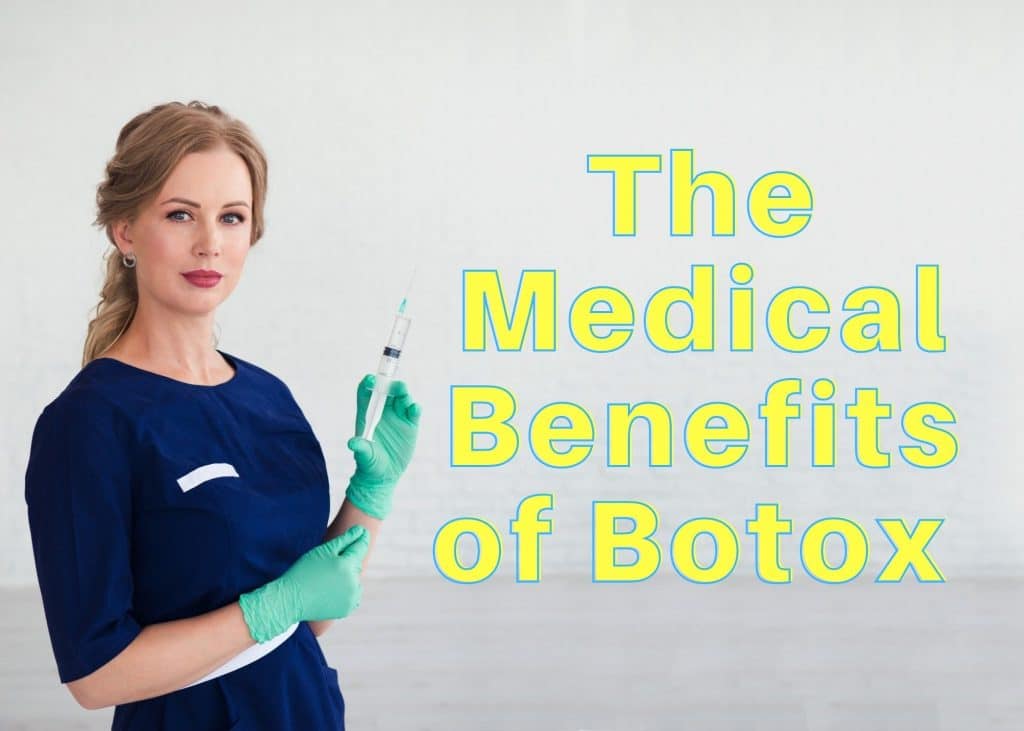
You may have heard of Botox being used primarily to reduce wrinkles, but it has plenty of other medical benefits as well. While there are many myths and inaccurate facts surrounding Botox, this page will solely focus on its medical benefits apart from the obvious ones. Without further ado, let’s dig in on the medical benefits of Botox.
Reduces Chronic Migraines
Migraines are intolerable headaches that can cause nausea and severe sensitivity to noise and light. Chronic migraines can last for over 24 hours. There’s no permanent cure for chronic migraines. However, research has shown Botox can help alleviate severe migraine patterns (15 or more a month). Botox injections can be injected into the neck and head after every twelve weeks to prevent chronic migraines from happening frequently and lessen their effects considerably.
Temporomandibular Joint (TMJ) Disorder
Botox has also found important therapeutic as well as cosmetic applications in dentistry. TMJ disorder is a painful condition caused by problems in the jaw joints or jaw muscles. Botox dental treatments are very effective at providing pain relief to patients with TMJ disorder, thanks to the muscle-relaxing properties of Botox.
Prevents Loss of Bladder Control
Loss of bladder control can be attributed to an overactive bladder that unexpectedly contracts frequently. Apart from the loss of bladder control, individuals could also suffer from frequent urination. To solve this problem, Botox can be injected into the bladder via a cystoscope.
A cystoscope is inserted through the urethra to inject the Botox, which can help normalize urination and aid the bladder in contracting regularly, thus preventing loss of bladder control.
Eliminates Underarm Sweating
Excessive sweating, also known as hyperhidrosis, occurs when the sweat glands in the underarms are triggered to produce sweat. Some neurologists and dermatologists recommend using Botox injections to reduce underarm sweating by injecting it directly into the muscles responsible for producing sweat.
Cure for Crooked Eyes
Crooked eyes, also known as Strabismus, are caused by unbalanced eye muscles that pull an eye abnormally. This pulling of the eye in an abnormal way causes misaligned eyes leading to double vision, blurred vision, eye soreness, and weak depth perception. Fortunately, all of these problems can be solved with botox injections.
Botox can be injected into the eye muscle to cause it to relax, which can even help realign the eyes for good. However, Botox injection is reserved for treating paralytic strabismus, not the usual strabismus found in children.
Eliminates Eyelid Muscle Spasms
Blepharospasm, commonly known as eyelid muscle spasms, can cause frequent and uncontrollable eye twitches, blinking, irritation, or pain of the eye and eyelids. These spasms can make it incredibly difficult to carry out everyday tasks like using a computer or driving. Eyelid muscle spasms can be relieved with Botox injections for several months until another injection may be required.
Relieves Symptoms of Cervical Dystonia
Cervical dystonia is a nerve disorder that causes muscles in the shoulder and neck to pull involuntarily, resulting in uncontrollable pain, muscle tremors, head tilting, and turning. Botox injections can be used to relax the shoulder and neck muscles to relieve the symptoms of cervical dystonia.
Reduces Effects of Upper Limb Spasticity
Upper limb spasticity causes involuntary contraction of the arm muscles. People with this condition may suffer stiff elbows, clenched fists, and the inability to control their arm movements. Different conditions could cause upper limb spasticity, like stroke, brain or spinal cord injury, cerebral palsy, and multiple sclerosis. Botox can be injected into the affected arm muscles to reduce the symptoms of upper limb spasticity.
Alternative “Off-Label” Medical Uses for Botox
Many dentists and surgeons use Botox to treat other medical conditions, typically not approved by the FDA. The treatment of unapproved medical conditions via Botox is referred to as “off-label.” Some examples of off-label Botox treatments are as follows:
- Depression
- Cold Hands
While there is no solid evidence proving that Botox can help with depression, some claim that it helps reduce its symptoms. According to the facial feedback hypothesis, a person’s facial expressions can affect their mood, and Botox has been reported to alleviate depressive disorders. Though, the exact mechanism of action is not clear and more research is needed to conclusively determine a causal link between Botox injections and depression.
Doctors at the Cold Hand Clinic have been using Botox to treat people with severely cold hands. Botox is injected into the hands to relax the muscles to improve blood circulation. This treatment lasts three months or so.
Other off-label Botox treatments are used to treat abnormal heartbeat, teeth grinding, facial tics, and so on.
Off-label treatments via Botox are fairly common and legal, but it is not proven to be safe. For this reason, if your doctor or dentist suggests an off-label Botox treatment, then ask about its effectiveness and safety.
Also, ask your doctor or dentist for their experience with Botox in treating the condition you are dealing with to make an informed decision. If you are not comfortable with the answers provided, do not hesitate to ask for other treatment options.
Previous Post Next Post